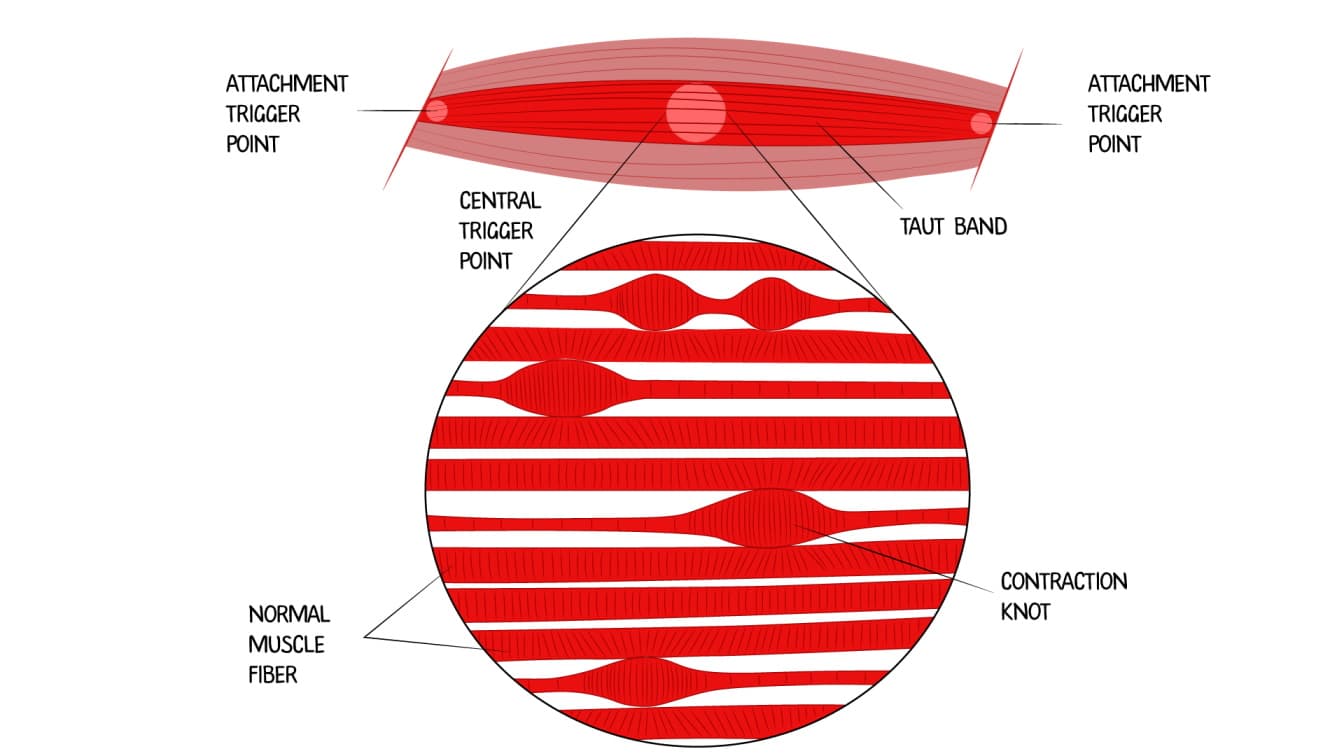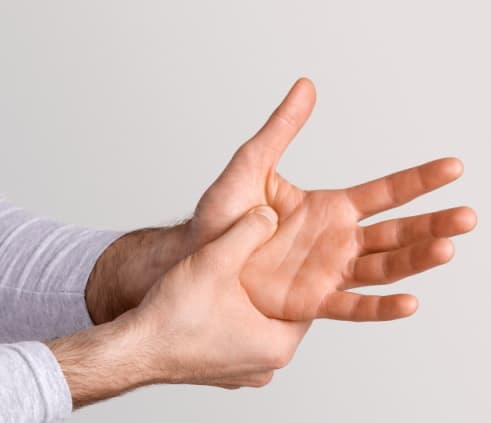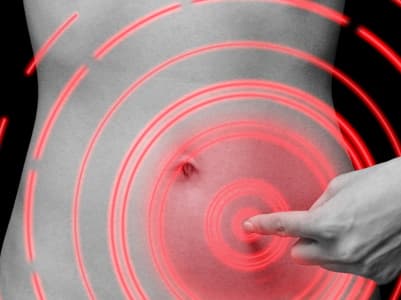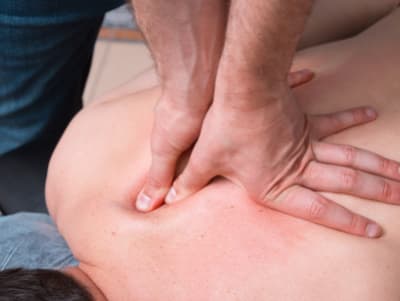Adelaide - Pasadena 5042

What are Trigger Points?
There is a lack of general agreement among physicians and therapists as to how to define and diagnose trigger points. This is one of the reasons for the wide differences in the outcomes of studies measuring the effectiveness of their treatment1.
The author of this website (= the massage therapist of ToThePoint Massage) has treated her own trigger points with great success and, together with formal study methods, this has helped her gain a thorough knowledge in the field of trigger point therapy.
Trigger Point Definition
A trigger point is a hardened, contracted spot in the fibers of a muscle, the fascia (a tissue that surrounds every structure in the body), a ligament or joint capsule.

Usually this spot is so small that you cannot feel it, but sometimes you can feel it as a small, hard knot as big as a pea under your skin. A trigger point is always sensitive to pressure, regardless of size.
Most people call these points “sore spots”, “muscle knots”, “tender points”, “pressure points” or “pain spots”, but the correct medical term is “trigger point”.
Although trigger points are the cause of major problems for many people, most of them don’t connect their pain or other health problems to them, and therefore never find an answer to their injury or complaint.
As trigger points are in many instances the root cause of pain and musculoskeletal dysfunction, it is important that everybody understands just what they are and why treatment needs to be specific.
The Scourge of Mankind
Usually people have dozens if not hundreds of sore spots in their muscles. Often you only become aware of them when a massage therapist applies pressure on them.
At ToThePoint Massage we are trained to identify these little contraction knots and work with you to reduce / eliminate them.
Why Trigger Points could be a Problem for you?

First of all, these muscle contractions can cause pain. You probably have experienced such pain at some stage of your life, but were unaware that this pain was the result of a trigger point.
Some medical studies suggest that trigger points are the cause (direct or indirect) in up to 85% of pain seen in pain clinic.3 Patients in a general medical practice rated this kind of pain as severe as, or more severe than pain from other causes such as pharyngitis, cystitis, angina, and herpes zoster.
In addition, an appreciable amount of the pain reported by many patients with fibromyalgia comes from their trigger points.2
Pain caused by trigger points can be felt in your shoulders, back, hip, knees, and almost any and every spot in your body. This type of pain may be very short (some seconds) in duration, or may last some hours. It may become chronic, and affect you for decades.
But even if you are not feeling any pain at all (at least not right now), latent trigger points are present in your body, and these may be the cause of other problems which you might not have related directly to your muscles.
Trigger Points - What is the evidence?
Further Readings
References:
Myofascial Pain and Dysfunction, Dr. Janet Travell, Dr. David Simons & Lois Simons,2nd edition, vol 1,1999 [1] p.31 [2] p.14 [3] p.12
Myofascial Pain and Dysfunction, Dr. Janet Travell, Dr. David Simons & Lois Simons, vol 2,1993
www.ipts.org.il/_Uploads/dbsAttachedFiles/Dommerholt.pdf
www.ncbi.nlm.nih.gov/pmc/articles/PMC3440564/?tool=pmcentrez
www.shockwave-belux.com/tl_files/shock/img/content/doc/Gleitz_Hornig_Triggerpunkte_EN.pdf



